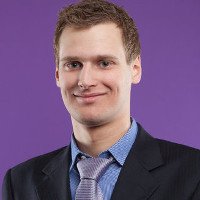Applied Scientific Computing (MATH 552)
Undergraduate course, University of Massachusetts Amherst, Department of Mathematics and Statistics, 2023
The goals of MATH552 are to expand on the foundational numerical techniques explored in MATH551. A core topic is the discussion of spatially extended systems (e.g. partial differential equations), and time dependent systems (e.g. ordinary differential equations), which frequently arise in physics, finance and biology. Climate models, fluid models, airplane models, biological models, or computer game physics rely on the accurate and efficient solving of differential equations.
Since it is impossible to represent continuous objects on a computer, we must discretize these functions. Three main methods are frequently employed:
In finite differences functions are discretized on grids or lattices. Approximations to derivatives and integrals are derived using Taylor’s theorem. We will encounter these first. While the general theory is straight forward, it turns out that establishing convergence will prove difficult in more advanced applications.
Finite elements are a collection of methods in which the domain is divided into small pieces (i.e. finite elements). Triangulation algorithms are commonly used to generate these finite elements. On the finite elements the partial differential equations reduce to simple algebraic equations, which are assembled into large (non)linear systems and solved.
An advantage of this method is that the method easily extends to irregularly shaped domains, and in addition to being a computational technique, it extends the analytical tools from functional analysis to the numerical discrete setting. Hence allowing the establishment of convergence results more easily than in the finite difference setting.
Due to their theoretical complexity we will not consider finite element methods in this course.
Spectral methods approximate functions using special functions such as the complex exponential (Fourier), Chebyshev polynomials, or many others depending on the domain and functions of interest.
In addition to our discussion of methods to discretize functions, we will encounter a few more numerical linear algebra topics: (1) Iterative linear system solvers such as the preconditioned conjugate gradient and/or multigrid methods; and (2) eigenvalue problems and the QR/QZ methods to approximate these eigenvalues using Householder reflections. Beyond the techniques involving differential equations (and time and interest permitting) we will discuss:
Introduction to numerical methods for stochastic processes e.g. Brownian motion, stochastic integration, stochastic differential equations. Stochastic simulations of particle systems of chemical reactions via Gillespie methods.
A brief introduction to Monte Carlo methods, and possible Markov Chain Monte Carlo (MCMC) methods and discussing the Metropolis-Hastings algorithm.
Mathematical optimization techniques. These are the core methods for modern machine learning approaches.
Projects
In lieu of a final exam, this class will feature a term project. You will be expected to give a short 5-minute project proposal presentation, create a final report, and give a final project presentation.
Lecture Notes
Detailed lecture notes will be available.
